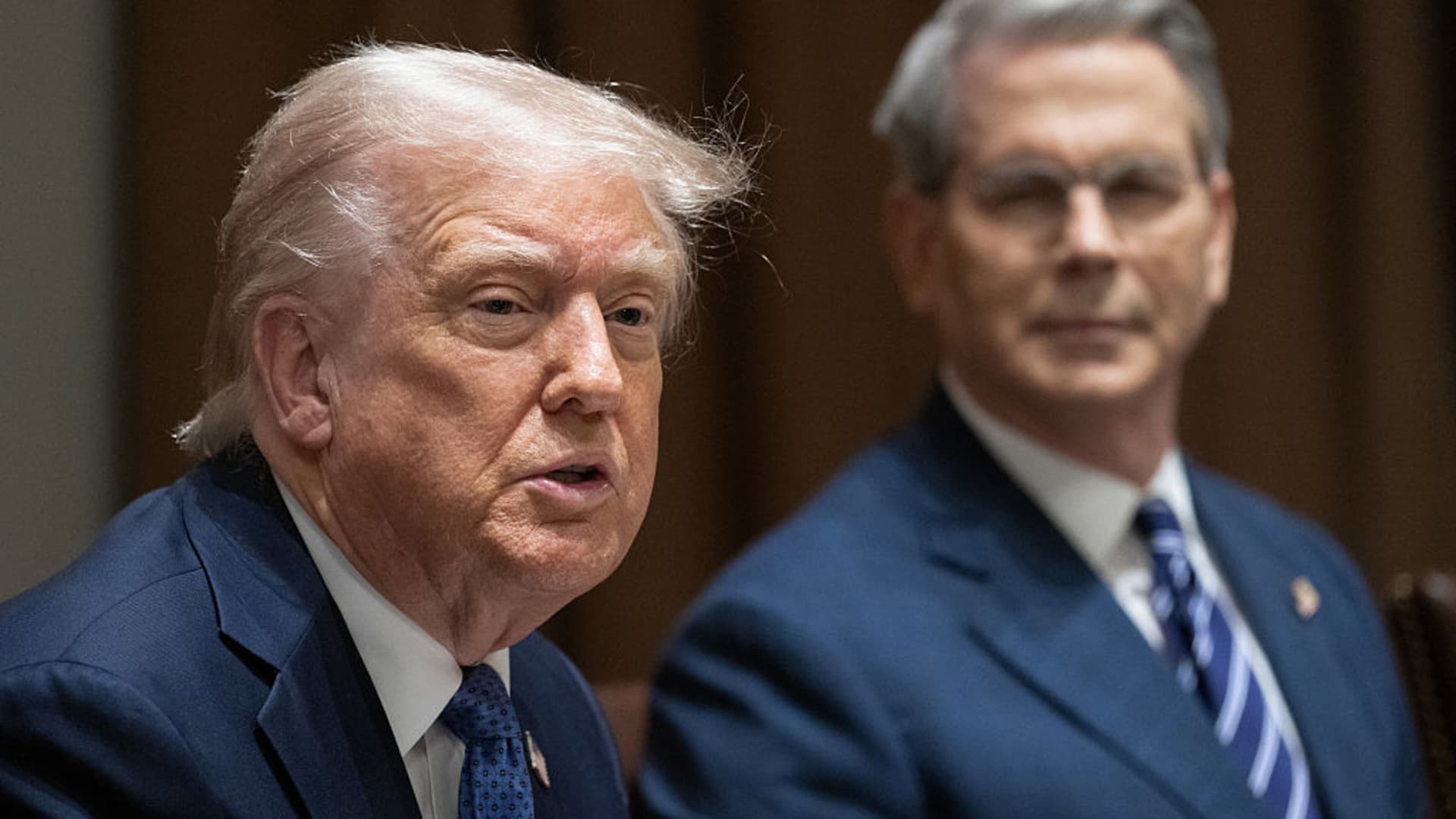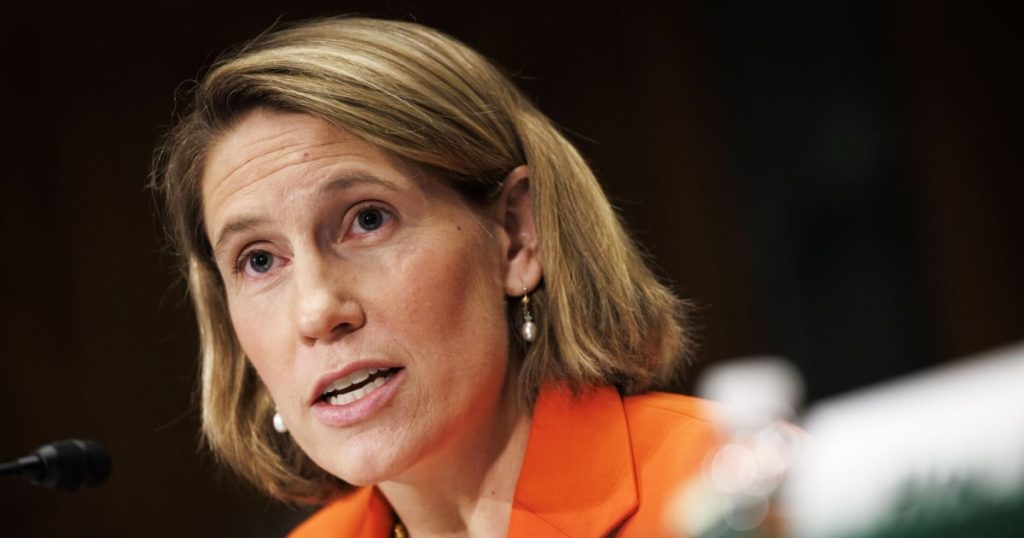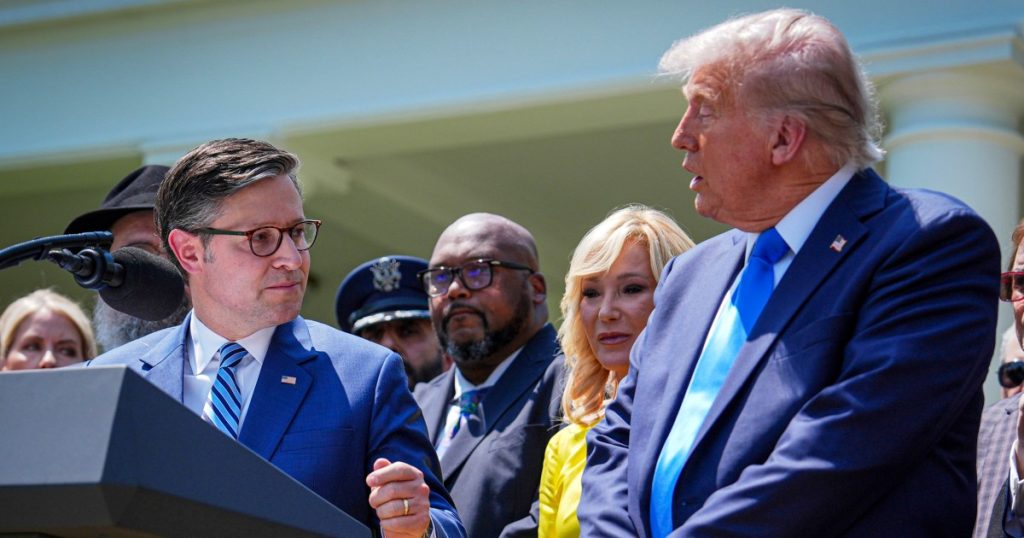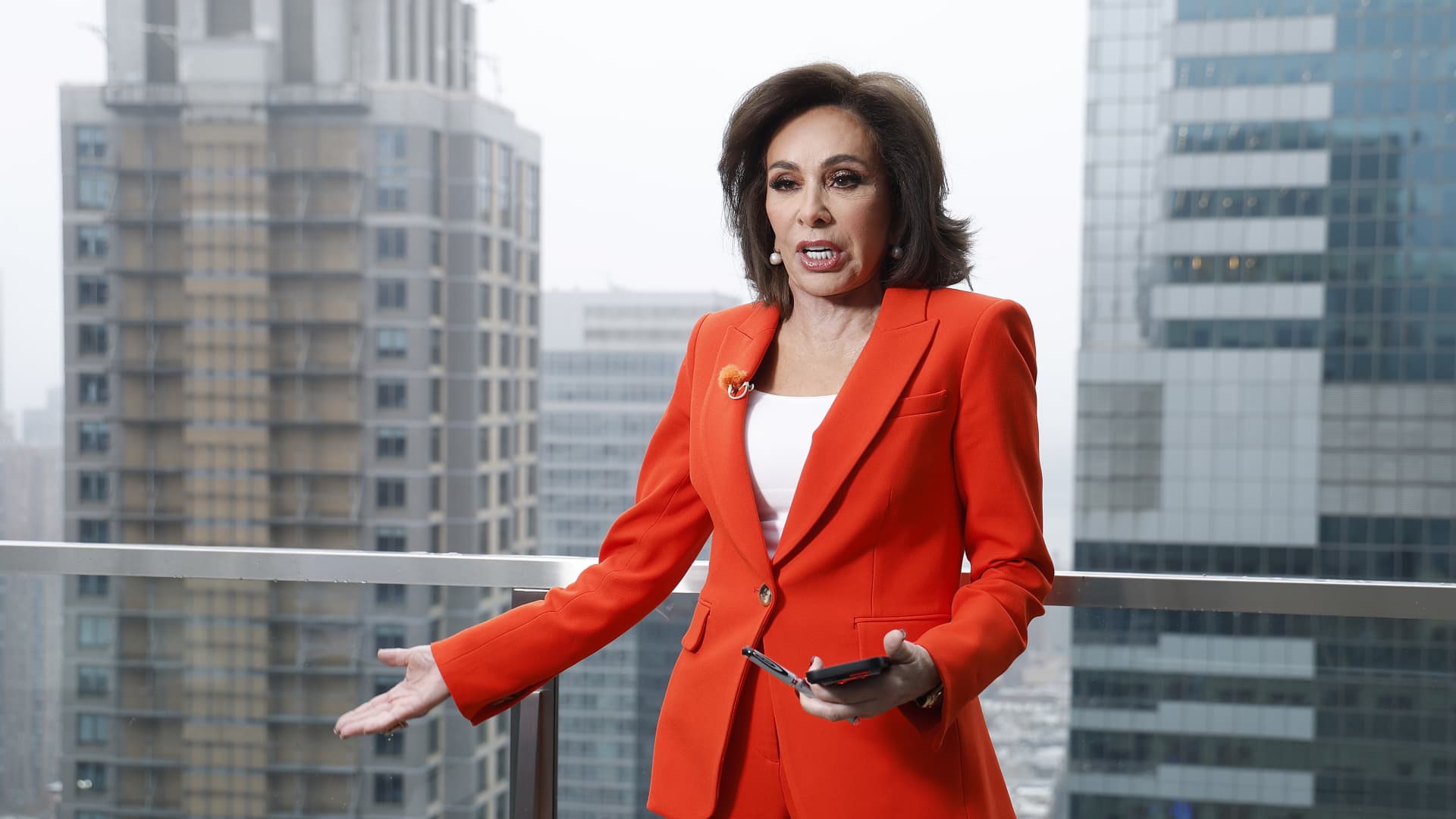Now Reading: Trump suggests cutting China tariff to still-high 80% ahead of U.S.-Beijing trade talks
-
01
Trump suggests cutting China tariff to still-high 80% ahead of U.S.-Beijing trade talks
Trump suggests cutting China tariff to still-high 80% ahead of U.S.-Beijing trade talks

US President Donald Trump, together with Treasury Secretary Scott Bessent, held talks with Prime Minister of Norway Jonas Gahr Store at the White House in Washington, DC on April 24, 2025.
President Trump hinted before crucial trade discussions that he was open to reducing tariffs on China to 80%, although this figure might not meet the expectations of investors and business leaders. Trump mentioned in a post on Truth Social that an 80% tariff on China seemed appropriate, deferring to Treasury Secretary Scott Bessent, who is part of the U.S. delegation engaging with Chinese counterparts in Switzerland this weekend.
While an 80% tariff would mark a notable decrease from the current 145% rate on many Chinese products, it could still be regarded as a barrier to trade. This percentage is substantially higher than the 10% baseline tariff outlined in the recent U.S.-U.K. trade deal revealed on Thursday. It remains uncertain whether Trump envisions the 80% rate as a permanent fixture or as a bargaining move.
Trump’s endeavor to revamp global trade has faced challenges, particularly with China. Despite the easing of tariffs on numerous major countries on April 9, tensions escalated between Washington and Beijing, culminating in both nations imposing tariffs exceeding 100% on goods. China stands as one of the U.S.’ top trading allies, with the U.S. exporting $143.5 billion and importing $438.9 billion worth of goods from China in 2024.
In a separate post on Truth Social, Trump urged China to open its market to the U.S., emphasizing the benefits for both nations. The ongoing talks in Switzerland are not anticipated to yield a comprehensive trade agreement. U.S. Trade Representative Jamieson Greer expressed a desire for the discussions to establish stability that could pave the way for further developments.
Recent shipping data has revealed a significant drop in goods shipped from China to the U.S., sparking concerns about potential price increases and product shortages in the near future. Trump’s remarks on Friday regarding tariff rates for China indicate a shift in his stance, contrasting with his previous announcement that he would not reduce tariffs to initiate negotiations.






